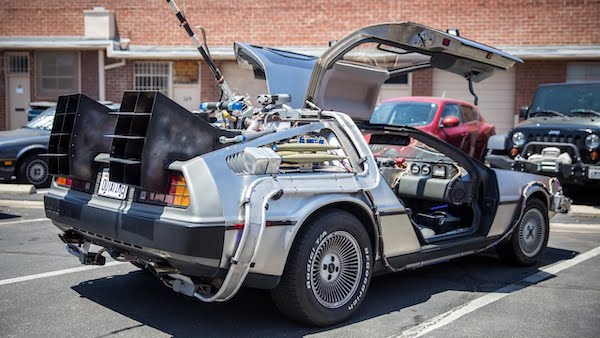Using a car today is more and more like using a computer. You press a button to start, can use a touch screen and benefit from functions more computer than mechanical.
Isn’t the connected car just a new mobile app?
Some car manufacturers began to take an interest in on-board systems relatively early. General Motors’ “OnStar” system is already 19 years old – and 6 million registered users when Ford’s “Sync” platform, launched in 2007, already powers 5 million vehicles. However, the “connected cars” trend continues. to develop but the figures are still timid For 95% of the market, the connected car remains a pipe dream.
At the same time, some manufacturers have started to open up their systems and interfaces to the development of applications by outside companies, which may prefigure an ecosystem of dedicated driver applications.
Connected cars
Originally, the connected car was content to offer a limited number of useful functions, such as navigation aid, assistance, electronic diagnostics. The functions have evolved over time – even going, as mentioned, as far as opening up to third-party apps – but connected cars remain, in the end, “property” of the manufacturers.
The on-board interfaces (screens, touch wheels, interaction ergonomics, etc.) are proprietary and difficult to upgrade. And there is no real standard on the market, each aiming to impose its own standard.
And smartphones
The trend of the connected automobile intersects with the massive trend of the use of smartphones and mobile applications.
However, each follows its own path. Alongside the automobile and its single-use systems, smartphones and applications offer a new horizon in terms of multiple uses. The initial interfaces are proprietary (phone manufacturer and operating system) but apps can evolve continuously and limited functionality replaced by a much better app.
How to connect the automobile on a large scale?
Connected mobile and automotive applications could go hand in hand. Provided that the different actors agree on a roadmap and at the cost of open standards.
So, how do you connect automobiles?
- The OBD (“on board diagnostic”) port offers a connection standard for standardized sensors. OBD makes it possible to capture the data of all the journeys, without forgetting a single one and also allows a high measurement precision. But this standard (physical = shape of the socket) hides a software / signal compatibility problem from vehicle dashboards, whose signal standards differ depending on the make, model and version of the vehicle. So this is a false standard. Otherwise,
- the firmware update remains complicated to implement
- connection to networks requires a dedicated SIM card integrated into the box, often restricted in terms of speed (2G / Edge)
- there is no human / machine interface (a touch screen for example)
- Mobile applications on smartphones:
- By remaining physically independent from the vehicle, the smartphone can receive applications that are simple to use and, above all, scalable and universal, whatever the make, model or age of your vehicle.
- The power of smartphones allows virtually unlimited software scalability and the addition of useful and ergonomic features
- The portable touch screen allows you to take the dashboard of your vehicle with you
the speed of the 3G / 4G networks included in the telephone subscription allows an inexpensive permanent connection. - Interaction with the driver (notifications) is possible if it is controlled and not disruptive
- Additional automotive functions are possible thanks to the on-board equipment by the smartphone: camera (DashCam), microphone, accelerometer, gyroscope, Bluetooth, NFC chip, etc.
One (device) for everyone!
Smartphones can do it all. Or almost. Services and functionalities are developing (payments for example) and the smartphone has become much more “Smart” than “Phone”: a unique and almost essential tool for our daily tasks, from the simple wake-up call, through entertainment, work but also the “quantification” of our trips.
In this sense, using an app to quantify our vehicles is the next logical step. On the other hand, the “quantified self” should also include the part of us that drives, the quantified driver. This is what eiver does by putting the driver – not the automobile, interchangeable – at the center.
And you ? Are you more interested in a car diagnosis or monitoring your driving?

